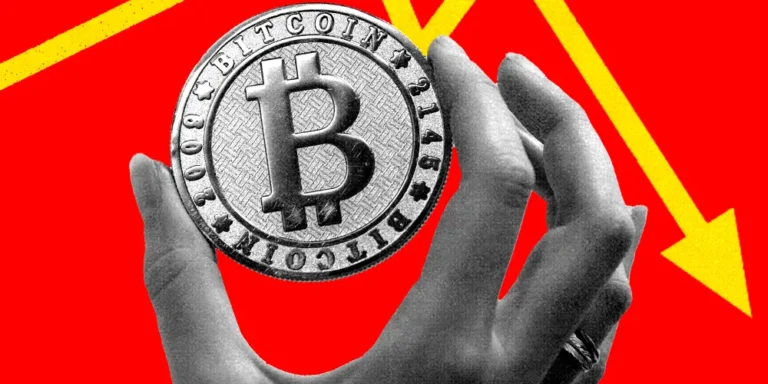58% of Amazon sellers spend less than $5,000 to start their e-commerce businesses. Top sellers share the 3 ways they spent their upfront money to become profitable.

Our investing experts respond to readers’ questions and write unbiased product reviews (here’s how we evaluate investing products). Paid non-client promotion: We may receive a commission from our partners in some cases. Our thoughts are always our own.
- Most Amazon sellers spend less than $5,000 launching their e-commerce businesses.
- Insider spoke to successful Amazon sellers about how they spent their start-up money.
- Most of it goes towards inventory. You’ll also want to prioritize ads.
The majority of Amazon sellers, 58%, spend less than $5,000 to start their e-commerce businesses, and 25% spend less than $1,000.
According to the 2023 State of the Amazon Seller report from JungleScout.
Arbitrage is a low-cost Amazon business model that involves purchasing discounted products from retailers or online to resell on Amazon. Because you only need a few units to get started, the initial costs are low.
Private label is a more expensive business model, but it is also one of the most profitable. This is the stage at which you create a product, source it from a site like Alibaba, and establish your own brand. It takes more time and money, but it has the most potential.
As a result, it is the most popular business model, with 54% of Amazon sellers following this path.
While private label requires more money up front, it is still possible to launch a brand on a tight budget.
Private label, according to Amazon seller Jatin Naran, who also runs a coaching business and creates content around Amazon FBA, “can cost you anywhere from $5,000 to $10,000.”” While it’s “not cheap,” he admits, one key benefit is that “you’re building a brand, which you can actually sell.”
Insider spoke with Naran and other successful Amazon sellers who went the private label route about how they spent their start-up funds to ensure their success.
1 Inventories
The majority of your startup funds will be spent on inventory.
Tyler Walter, e-commerce expert and co-founder of supply chain services company 330 Trading, advises new sellers to expect to spend 75-80% of their initial investment on the product itself.
Joe Reeves, who built a seven-figure business selling wallets on Amazon and has done over $1 million in sales in a single month, said his first order cost around $10,000: $7,000 for 1,000 wallets priced at $7 per unit and another $3,000 for shipping.
To continue to grow and scale, you must constantly purchase inventory — and you must order strategically so that you never run out of product.
“You can’t run out of stock.” It harms your organic ranking,” Reeves explained, referring to where your product appears on Amazon’s website when someone searches for it.
Constantly purchasing inventory can be costly, especially if you’re growing as quickly as Reeves was.
“What I didn’t realize at first is that by the time you sell half your product you need to be placing an order for the next batch,” he told me. He ended up spending far more money than he had anticipated in the early months. “Because I was growing so fast, I went from buying 1,000 wallets to needing to buy 2,000 wallets to needing to buy 5,000 wallets to needing to buy 10,000 wallets.”
It’s possible to start on a smaller scale — Shan Shan Fu, who sold more than $40,000 worth of face masks per month, started with a $2,000 budget, $1,250 of which went toward inventory — but, in general, “the more money you’re willing to spend on it, the faster it’ll blow up,” said Reeves.
2 Educating and providing resources
Naran, who tried and failed several times before his Amazon wholesale business took off, eventually invested in an Amazon FBA online course.
“In business, I believe there are two ways to find success,” he went on to say. “You either spend time, fail, and learn from your mistakes, or you don’t.” Or you spend money on someone who has already accomplished what you want to accomplish, learn from them, and shorten your path to success.”
There are numerous free online resources available, including YouTube videos and articles, but paying for a course or a coach may hold you accountable in a different way.
According to Reeves and Fu, a subscription to software that helps you identify product opportunities, optimize your listing, and ultimately grow your online business is a necessary expense. They both use Helium 10, which also provides members with an online course called “Freedom Ticket,” but there are other similar softwares available, such as JungleScout.
Fu enjoys using Helium 10 to analyze product demand and competition. She is specifically looking for products with high demand, high search volume, and low competition.
3. Ads
“Reviews are probably one of the most important things, if not the most important thing,” said Reeves, when it comes to succeeding as an Amazon seller. And, in order to get reviews, you must first sell your product.
According to him, about 4% of users will leave a review. That means you’d have to sell 250,000 units to get 10,000 reviews.
This is where advertisements come into play. They are expensive, but they are worthwhile, according to Reeves, who was spending $300 to $500 per day on advertising in the early stages of his company.
It felt like a lot of money at the time, and it wasn’t always easy to justify the expense, he added. “That can be a shock to anybody who isn’t used to spending money, especially in the beginning when you’re not seeing much return and it seems like you’re just burning that money into thin air,” he said.
As his revenue increased, he was able to spend more on advertising, up to $10,000 per day, he said. He used to outsource all of his advertising to Trivium Group, which specializes in Amazon ad management, but he recently launched his own firm, Reez.
Naran also emphasizes the significance of running effective advertisements. Ads should be your next priority after you’ve chosen a profitable product to sell, he says: “Amazon ads is a big part of this entire process.” Ads can be difficult to crack at times, but if you know how to run them correctly, you can make a lot of money on Amazon.”






